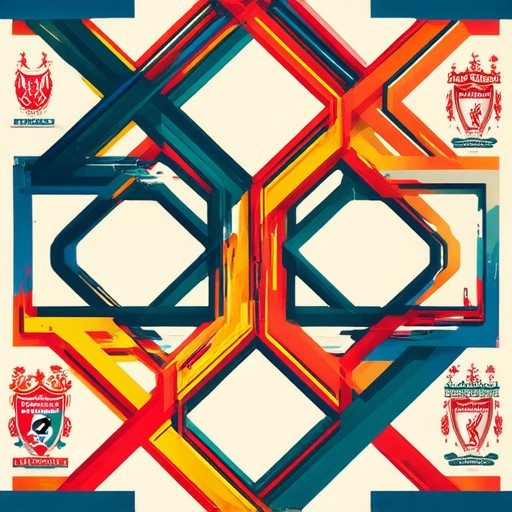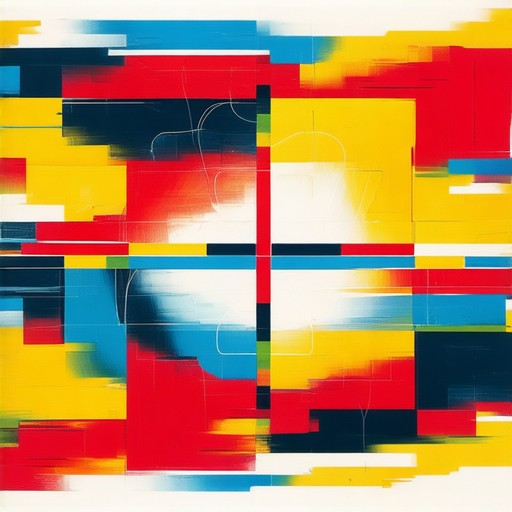Liverpool Football Club has long been recognized as one of the most dynamic and successful teams in English football, consistently competing at the highest level. Their ability to adapt strategies, develop young talent, and maintain a competitive edge is a testament to their commitment to excellence. For football enthusiasts, there’s nothing quite as fascinating as delving into the intricacies of a team’s lineup, analyzing the choices made by managers, and understanding how these selections impact performance on the pitch. In this comprehensive exploration, we will break down the Liverpool lineup, examining the defensive setup, attacking options, midfield dynamics, full-backs, wingbacks, youth prospects, and the rotational systems that define their playing style. This detailed analysis will provide insight into what makes Liverpool’s lineup unique and how it contributes to their success, offering a deeper understanding of the club’s current state and future prospects.

What Does a Typical Liverpool Lineup Breakdown Look Like?
Liverpool typically employs a 4-3-3 formation, blending attacking flair with defensive solidity. Here’s a breakdown of their usual lineup:
- Full-backs: Liverpool’s full-backs are often positioned to overlap and support attacks, utilizing their pace and attacking ability.
- Central Midfielders: Two central midfielders control the tempo, providing energy and creativity, often looking to break up opposition play and carry the ball forward.
- Attacking Midfielder: One advanced midfielder drives forward, looking to exploit gaps in defense and create chances for teammates.
- Strikers: Liverpool often fields two forwards, with one dropping deep to link defense and attack, while the other stays central to target the opposing goalkeeper.
The team’s style emphasizes possession-based football, quick transitions, and high pressing to disrupt opponents. Liverpool’s setup often includes overlapping full-backs and intricate link-up play between midfielders and attackers, making them a formidable force in attack.
For more detailed insights into Liverpool’s tactics and player performances, visit their official website: Liverpool FC .
Key Elements of a Liverpool Lineup Breakdown
Liverpool’s lineup breakdown is a meticulous process that involves analyzing various factors to understand their tactical approach, player roles, and strategic decisions. Here are the primary components that typically comprise a Liverpool lineup breakdown:
- Formation Shape : Liverpool often utilizes a flexible formation, commonly 4-3-3 or 4-4-2, depending on the opponent’s strengths and the game situation. This formation allows for fluidity and adaptability in attacking play.
- Role Definitions : Each player’s role is clearly defined. Central defenders must cover central areas, full-backs are often tasked with overlapping and supporting attacks, midfielders dictate tempo and create chances, and wingers operate to stretch defenses.
- Tactical Systems : Liverpool employs pressing strategies, quick transitions, and overlapping full-backs to exploit defensive gaps. Their ability to switch between defense and attack rapidly is a hallmark of their play.
- Defensive Setup : The defensive organization focuses on compactness, communication, and quick decision-making. Liverpool often uses a combination of zonal marking and man-marking, depending on the opponent’s attacking threats.
- Offensive Play : Attacking play revolves around width, overlap, and quick ball circulation. Liverpool’s full-backs are known for their advanced positions, allowing them to contribute to attacks effectively.
- Special Considerations : Liverpool adapts their setup based on the opposition. Against high-pressing teams, they may prioritize quick build-up play. Against deeper defenses, they focus on patient build-up and exploiting half-spaces.
This breakdown highlights Liverpool’s tactical versatility and organizational capabilities, making them a formidable force in modern football. For further insights, you can explore detailed match analyses on platforms like The Anfield Talk .

What Typically Comprises a Liverpool Lineup Breakdown?
A Liverpool lineup breakdown typically includes an analysis of the team’s starting XI, key positions, formations, and tactical approaches. Here’s a detailed look at what you might expect:
- Defense (Backbone): Liverpool’s defense is often a mix of experienced veterans and young talents. Players like Virgil van Dijk, Alisson Becker, and Andy Robertson are usually starters. Van Dijk provides leadership and composure at center-back, while Robertson offers width and overlapping runs from left-back.
- Midfield (Pivot and Workhorse): The midfield is crucial for controlling the game. Players like Jordan Henderson, Thiago Alcantara, and Fabinho often feature. Henderson is known for his energy and leadership, while Alcantara and Fabinho excel in retaining possession and breaking up plays.
- Attack (Wingers and Strikers): Liverpool’s attack is dynamic, with wingers like Sadio Mané and Mohamed Salah providing pace and creativity. Salah, in particular, is often the focal point, while Roberto Firmino and Divock Origi rotate in the striker role depending on the game’s demands.
The team often employs a 4-3-3 or 4-3-2-1 formation, emphasizing high pressing and quick transitions. Manager Jürgen Klopp’s philosophy revolves around fast counter-attacks and exploiting space in wide areas. Defensively, Liverpool focuses on compactness and quick recovery to limit opponents’ chances.
Key aspects of a Liverpool lineup breakdown also include:
- Positional Play: Players are often positioned to overload one side of the field, creating numerical superiority.
- Set-Piece Expertise: Liverpool’s ability to exploit set-pieces, particularly from corners and free-kicks, is a well-documented strength.
- Depth and Rotation: While the starting XI is critical, Klopp often rotates squad players like Georginio Wijnaldum, James Milner, and Alex Oxlade-Chamberlain to manage fatigue and maintain consistency.
Competitors like Manchester United , Chelsea , and Manchester City often pose unique challenges, requiring Liverpool to adapt their tactics accordingly. However, Liverpool’s ability to dominate possession and break down defenses remains a hallmark of their gameplay.

Key Aspects of a Comprehensive Liverpool Lineup Breakdown
The Liverpool football club is renowned for its dynamic gameplay, tactical acumen, and world-class squad. A comprehensive breakdown of their lineup typically includes an analysis of key positions, playing style, strengths, and weaknesses. Here’s an in-depth look:
1. Key Positions
- Goalkeeper:** Ederson Moraes is known for his agility and reflexes, making him a cornerstone in defense. His distribution ability significantly aids in transitioning play.
- Defensive Midfielder:** Jordan Henderson excels in breaking up plays and initiating attacks, while Thiago Alcantara offers creativity and composure in possession.
- Central Defender:** Virgil van Dijk provides leadership and solidity at the heart of defense, while Jürgen Klopp often utilizes a back-three system for added stability.
- Wingers:** Mohamed Salah and Sadio Mané are instrumental in attacking, offering pace and dribbling abilities. Their ability to cut inside and deliver crosses is a significant asset.
- Striker:** Roberto Firmino thrives in pressing the opposition and is adept at linking play between midfield and attack. His movement and intelligence are key to Liverpool’s fluidity.
2. Playing Style
- Liverpool’s philosophy revolves around high pressing, quick transitions, and fluid positional interchange. Their ability to quickly recover from defensive lapses is a hallmark of their game.
- The “Anfield Effect” refers to the increased performance of players when playing at home, which is a psychological advantage for the team.
- Klopp’s tactics emphasize versatility, with players often shifting positions to adapt to opponents. This flexibility allows Liverpool to exploit various defensive gaps.
3. Strengths
- High pressing defense forces opponents into mistakes, creating turnovers that lead to counterattacks.
- Depth in midfield ensures sustained pressure and control of the game tempo.
- Attacking options are vast, with versatile wingers and a clinical striker able to exploit defenses in multiple ways.
- Strong mental resilience, particularly in big games, has been a trait under Klopp’s leadership.
4. Weaknesses
- Defensive vulnerabilities can occur when facing high-pressure opponents who target set-pieces.
- Physicality in aerial duels can sometimes be an issue against taller, stronger strikers.
- Depending on the opponent’s tactics, Liverpool may struggle to deal with deep-sitting defensive blocks.
- Injuries to key players, especially those in the final third, can disrupt their offensive momentum.
5. Notable Players and Managers
- Manager Jürgen Klopp’s influence on the team’s identity is immeasurable, emphasizing intensity and pressing.
- Star players like Salah, Mané, and Firmino have consistently delivered on the pitch, contributing to numerous titles and domestic success.
- Young talents like Harvey Barnes and Rhys Williams are emerging as future stars, adding depth and energy to the squad.
6. Opponent Strategies
- Teams often look to exploit Liverpool’s vulnerability in aerial duels by targeting set-pieces and long balls.
- Counter-attacking approaches can be effective if Liverpool loses possession in dangerous areas.
- Avoiding fouls in advanced positions is crucial, as Liverpool’s press can quickly transition back into attack.
Understanding these aspects provides insight into why Liverpool remains a dominant force in English football. Their blend of talent, tactics, and teamwork continues to set them apart in the Premier League.
What Typically Makes Up a Comprehensive Liverpool FC Lineup Breakdown?
A comprehensive Liverpool FC lineup breakdown typically includes a mix of world-class talent across various positions, reflecting the team’s dynamic style and tactical approach. Here’s a detailed breakdown:
- Striker :
- The primary goal-scorer, often a clinical finisher who can exploit defensive gaps. Players like Mohamed Salah, Sadio Mané, and Roberto Firmino have excelled in this role, combining pace, dribbling, and composure.
- Wingers :
- Liverpool’s attacking play relies heavily on wide players who can cut inside and deliver dangerous crosses. Examples include Andy Robertson and Trent Alexander-Arnold, whose overlapping runs and set-pieces are instrumental.
- Midfielders :
- Central midfielders like Jordan Henderson and Fabinho are crucial for energy, tackling, and distributing the ball. Their ability to screen the defense and transition quickly is vital.
- Fullbacks :
- Modern fullbacks like Andrew Robertson and Virgil van Dijk (when playing left-back) provide width, overlap, and defensive stability. Their versatility allows Liverpool to overload the attack.
- Center-Backs :
- A solid defensive trio, often led by van Dijk, provides leadership and reliability. They must excel in aerial duels and one-on-one battles to counter attacking threats.
- Goalkeeper :
- A commanding presence like Alisson Becker ensures stability at the back. His distribution and shot-stopping abilities are key to Liverpool’s high-pressing style.
Competitors like Manchester United and Chelsea often pose threats, but Liverpool’s fluidity and tactical flexibility allow them to adapt. For more insights into Liverpool’s lineup dynamics, explore player profiles and match analysis on The Anfield Talk.

What Typically Makes Up a Comprehensive Liverpool Lineup Breakdown?
A comprehensive Liverpool lineup breakdown typically includes several key components that analyze both the squad and tactics employed by manager Jürgen Klopp. Here’s a detailed look at what usually constitutes a thorough analysis:
1. Key Players Analysis
- Star Forward : Analyzing the performance and impact of Liverpool’s primary striker, often Mohamed Salah, Sadio Mané, or Roberto Firmino.
- Midfield Dynamos : Evaluating the role of central midfielders like Jordan Henderson, Fabinho, or Thiago Alcântara, who are crucial to Liverpool’s pressing game.
- Defensive Rock : Assessing the contributions of center-backs like Virgil van Dijk and Joel Matić, who are pivotal in maintaining defensive organization.
- Full-Backs : Examining the performances of Liverpool’s wing-backs, such as Andy Robertson and Trent Alexander-Arnold, who provide width and attacking threat.
2. Tactical Formations
- 4-3-3 System : Breaking down how Klopp’s preferred formation works, emphasizing the high press, quick transitions, and overlapping full-backs.
- Pressing Game : Highlighting Liverpool’s aggressive pressing strategy, which forces opponents into mistakes and turnovers.
- Counter-Attacks : Discussing how Liverpool quickly exploit defensive gaps after losing possession.
3. Defensive Strategies
- Center-Back Partnership : Analyzing the chemistry between van Dijk and Matić, key to Liverpool’s solid defense.
- Man Marking : Exploring how Liverpool uses man marking to disrupt opponents’ build-up play.
- Set-Piece Vulnerability : Assessing the defensive issues that sometimes arise against set-pieces.
4. Attacking Options
- Wing Play : Evaluating the effectiveness of Liverpool’s wingers in creating chances and scoring goals.
- Crossing Ability : Highlighting the precision of crosses from the wings, a hallmark of Liverpool’s attack.
- Goal Scoring Patterns : Identifying patterns in how Liverpool score, whether through fast counter-attacks or patient build-up play.
5. Youth Development Impact
- Young Stars : Discussing the role of Liverpool’s academy graduates, such as Harvey Barnes and Rhys Williams, in contributing to the first team.
- Development Pathways : Analyzing how Liverpool’s youth system produces talent ready to compete at the highest level.
Conclusion
A comprehensive Liverpool lineup breakdown goes beyond just listing players and tactics. It delves into understanding how Klopp’s philosophy shapes the team, how individual performances contribute to collective success, and how Liverpool adapts to different opposition styles. This holistic approach ensures fans and analysts gain deep insights into why Liverpool consistently perform at the highest level in English football.





0 Comments